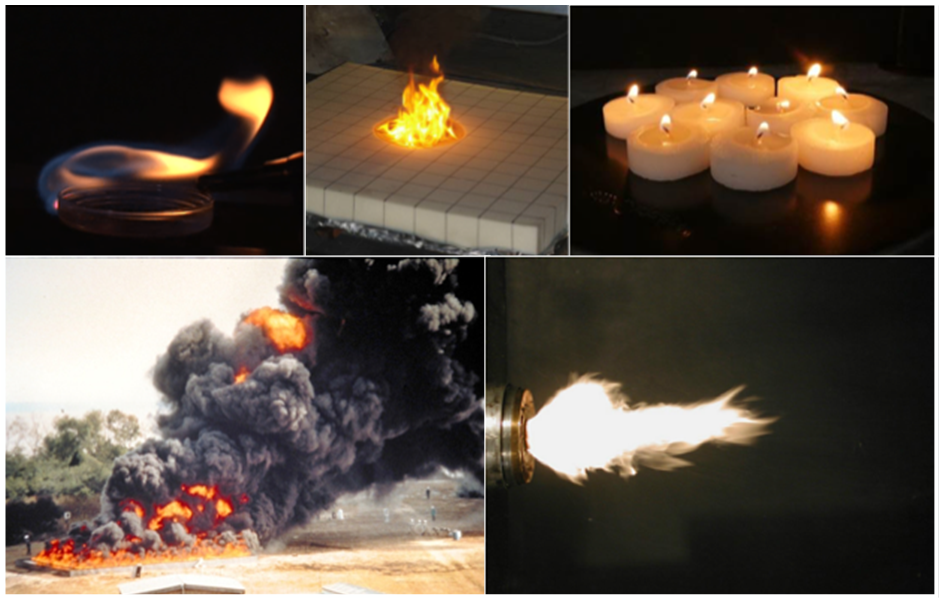Liquid Fuelled Fires
There are several modes in which liquid fuels can burn. The differences between how liquids burn in these different modes lends itself to better understand of how fuel orientation, configuration and decomposition, surface area-to-mass ratio and mixing will affect fire growth and development.

Fires may be established: in a pool fire with a fire plume rising directly above the surface of the liquid; in a melt pool from a solid fuel; through capillary action with melted fuel drawn up a wick as in a candle; or in a spray flame driven by atomized fuel droplets, as seen in Figure 42. The spray is an especially interesting fire because flame propagation depends on the surface area-to-mass ratio of the droplets. As this ratio increases (or in other words, the surface area increases and mass decreases), the fuel droplets become smaller, making the material easier to vaporize and ignite. The flame will then propagate more easily through the fuel mass.
This is the principle behind why atomized liquids can ignite when the same pool of that liquid cannot. It also explains why spray flames often burn with a higher efficiency of combustion and can release energy more quickly than a pool fire involving similar quantities of the same fuel.